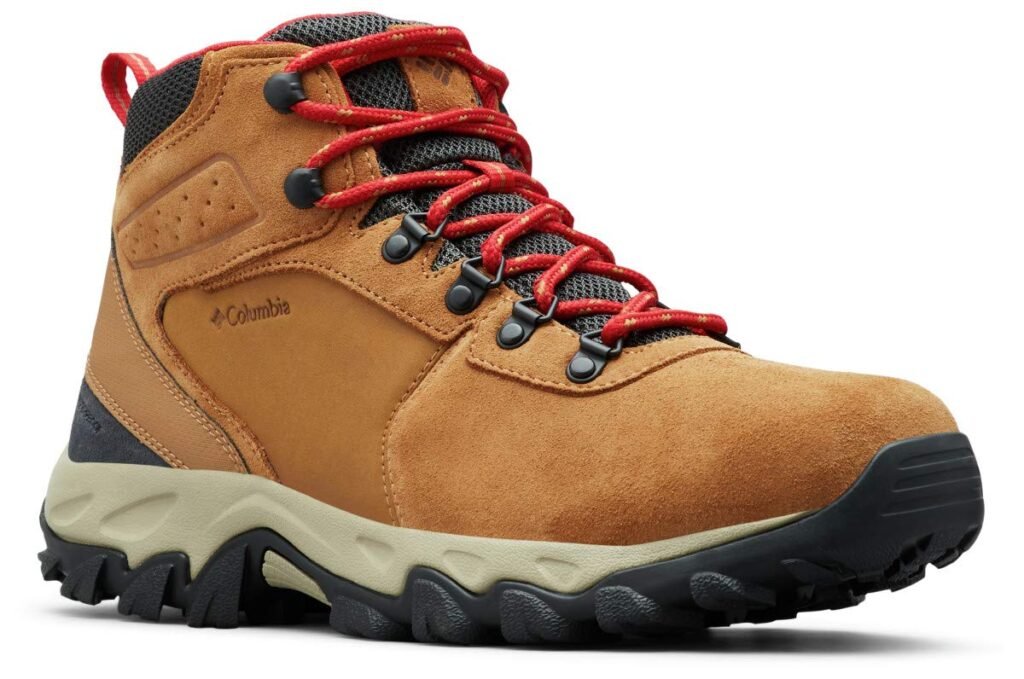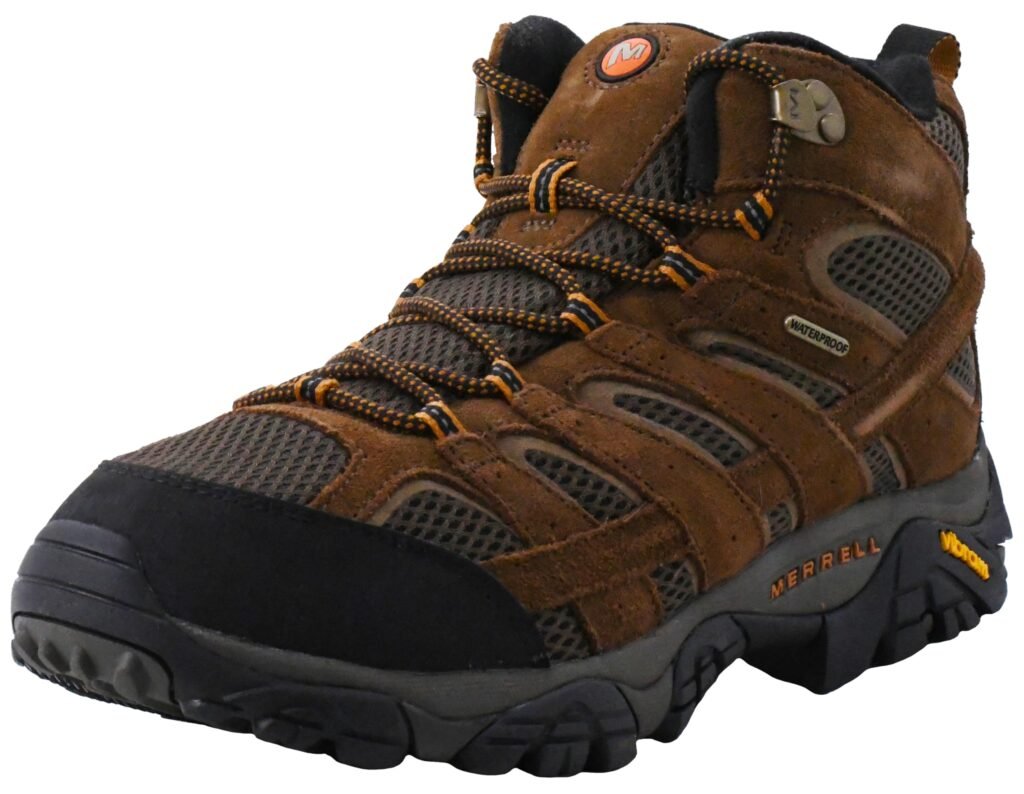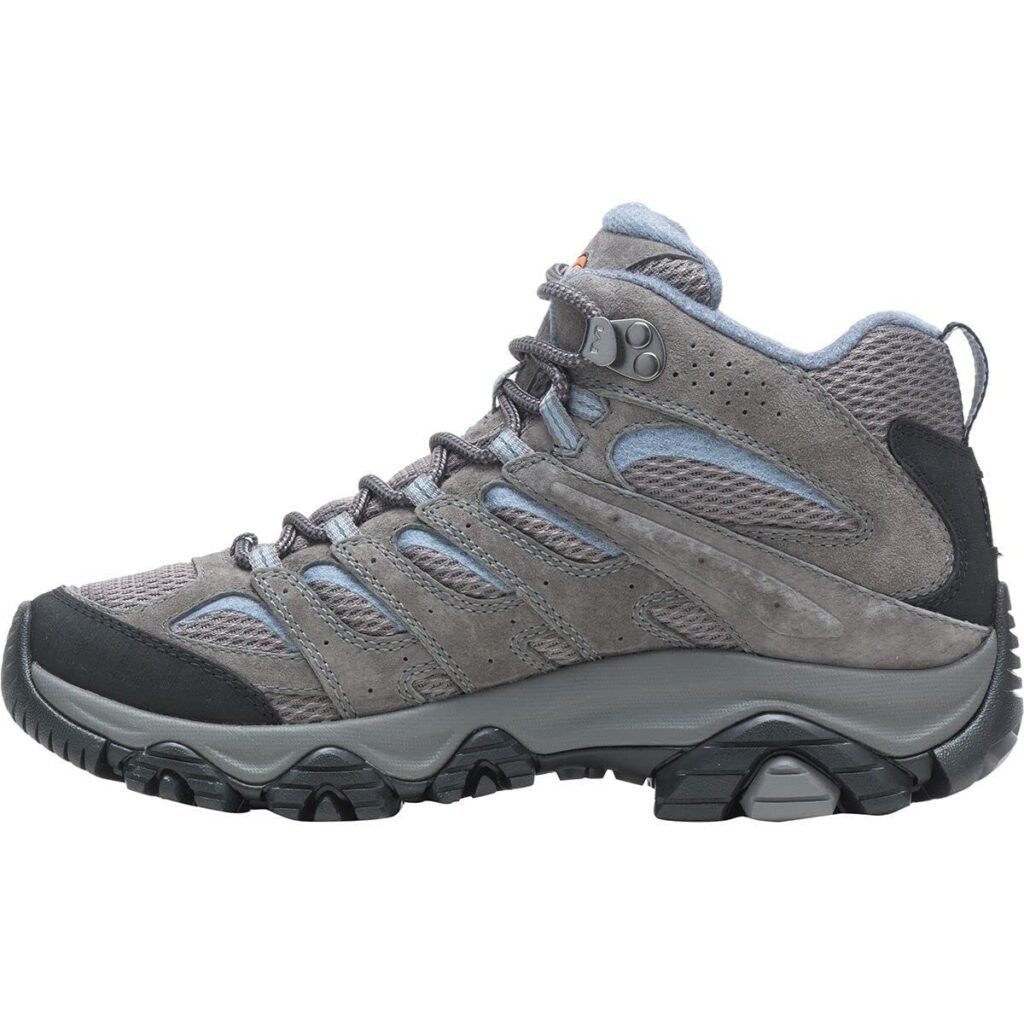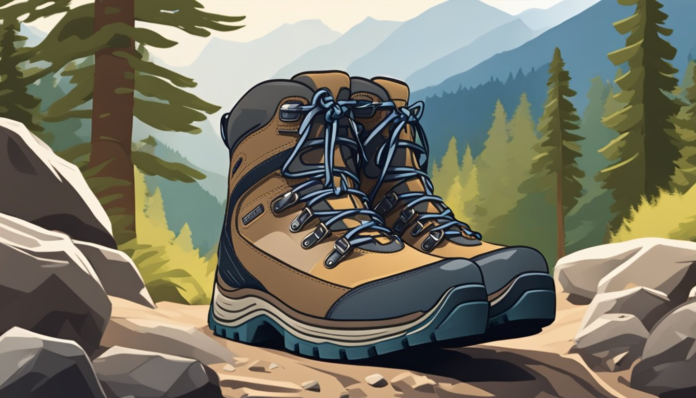Hiking boots are essential gear for outdoor enthusiasts, providing support, protection, and traction on various terrains. Whether you’re tackling rugged mountain trails or exploring gentle forest paths, the right pair of hiking boots can make all the difference in your comfort and safety. These specialized footwear options are designed to withstand the rigors of outdoor adventures while keeping your feet dry and secure.
Choosing the best hiking boots depends on several factors, including the type of terrain you’ll encounter, the duration of your hikes, and your personal preferences. Some hikers prefer lightweight, flexible boots for day hikes, while others opt for more robust, supportive options for multi-day treks or challenging landscapes. Waterproofing, breathability, and durability are key features to consider when selecting your ideal pair.
Best Hiking Boots
When shopping for hiking boots, pay close attention to the fit, materials, and sole construction. A proper fit is crucial to prevent blisters and discomfort on long hikes. The upper material should balance durability with breathability, while the sole should provide adequate traction and cushioning for your intended use. You’ll want to find a pair that offers the right balance of features for your specific hiking needs.
Columbia Newton Ridge Plus II Hiking Boot

You’ll find these boots to be a reliable choice for your hiking adventures, offering a blend of durability, comfort, and waterproof protection.
Pros
- Waterproof suede and leather construction
- Lightweight midsole for comfort
- High-traction Omni-Grip outsole
Cons
- May require break-in period
- Limited color options
- Potentially less breathable in hot weather
The Columbia Newton Ridge Plus II Suede Waterproof Hiking Boot combines rugged construction with practical features for trail enthusiasts. Its waterproof suede and leather exterior shields your feet from moisture, making it suitable for various weather conditions. The boot’s seam-sealed design adds an extra layer of protection against water intrusion.
Columbia’s signature lightweight midsole technology enhances comfort during long hikes. This feature provides cushioning and energy return, reducing fatigue as you traverse challenging terrains. The lace-up closure allows you to adjust the fit according to your preference, ensuring a secure feel throughout your journey.
Traction is crucial for hikers, and these boots deliver with the Omni-Grip outsole. This multi-terrain system uses specially formulated compounds and tread patterns to provide grip on diverse surfaces, including ice and snow. The durable metal hardware and robust construction suggest these boots can withstand regular use on rugged trails.
Merrell Moab 2 Mid Waterproof Boots

These versatile hiking boots offer exceptional comfort, durability, and waterproof protection for your outdoor adventures.
Pros
- Out-of-the-box comfort
- Waterproof membrane
- Vibram traction
Cons
- Might run warm in hot weather
- Break-in period for some users
- Slightly heavy for long treks
The Merrell Moab 2 Mid Waterproof Boots live up to their reputation as the “Mother-Of-All-Boots.” You’ll appreciate the immediate comfort these boots provide, thanks to their supportive footbed and pigskin leather and mesh upper. The waterproof membrane keeps your feet dry while allowing moisture to escape, making them ideal for various weather conditions.
Durability is a key feature of these boots. The protective toe cap and metal hook lace closure ensure they can withstand tough terrain. The Vibram sole provides excellent traction, giving you confidence on slippery or uneven surfaces. A bellows tongue keeps debris out, adding to the overall protection these boots offer.
While the Moab 2 boots excel in many areas, they may feel warm during hot weather hikes due to their waterproof construction. Some users might need a short break-in period to achieve optimal comfort. For extended treks, their weight could be a factor to consider. Despite these minor drawbacks, the Merrell Moab 2 Mid Waterproof Boots remain a top choice for hikers seeking reliable, comfortable footwear.
Merrell Moab 3 Waterproof Hiking Boots

You’ll find these boots offer exceptional comfort and durability for your outdoor adventures.
Pros
- Comfortable right out of the box
- Waterproof and breathable
- Excellent traction on various terrains
Cons
- May run slightly small
- Heavier than some lightweight options
- Break-in period needed for some users
The Merrell Moab 3 Waterproof Hiking Boots have earned their reputation as a top choice for hikers worldwide. With a waterproof membrane, these boots keep your feet dry while allowing moisture to escape. The pigskin leather and mesh upper provide durability and breathability, ensuring your feet stay comfortable on long treks.
Featuring a Vibram TC5+ rubber sole, these boots offer superior grip on various surfaces. The protective toe cap adds extra durability, while the Merrell Air Cushion in the heel absorbs shock and enhances stability. You’ll appreciate the Kinetic Fit ADVANCED removable insole, which provides medium support and reinforced heel cushioning.
Environmentally conscious hikers will be pleased to know that Merrell has incorporated recycled materials in the laces, webbing, and mesh lining. The boots are designed to be versatile, suitable for different terrains and weather conditions. While some users may find them slightly heavier than ultralight options, the trade-off is increased durability and support for your outdoor adventures.
Buying Guide
Selecting the right hiking boots is crucial for comfort and safety on the trails. Consider these key factors when making your choice:
Fit and Comfort
Ensure proper fit with about a thumb’s width of space at the toe. Try boots on with your hiking socks and walk around to test comfort.
Boot Type
Choose based on your hiking style:
| Boot Type | Best For |
|---|---|
| Light Hikers | Day hikes, easy trails |
| Midweight | Backpacking, rougher terrain |
| Heavyweight | Long treks, heavy loads |
Waterproofing
Opt for waterproof boots if you’ll encounter wet conditions. Remember, they may be less breathable in hot weather.
Traction
Look for deep, multi-directional lugs on the outsole for better grip on various surfaces.
Ankle Support
Higher ankle cuts provide more support for challenging terrain and heavy loads.
Materials
Upper materials affect durability and breathability:
- Leather: Durable, water-resistant
- Synthetic: Lightweight, quick-drying
Break-in Period
Consider the time needed to break in your boots before a big hike. Leather boots typically require more break-in time than synthetic ones.
Weight
Lighter boots reduce fatigue but may sacrifice durability. Balance weight with your hiking needs.
Remember to try on boots late in the day when your feet are slightly swollen, similar to how they’ll be on a hike.
Frequently Asked Questions
Choosing and caring for hiking boots involves considering durability, fit, features, maintenance, gender-specific designs, and budget. These key factors help ensure you select boots that meet your needs on the trail.
What are the most durable brands for hiking boots?
Brands like Danner, Lowa, and Zamberlan are known for their durable hiking boots. These manufacturers use high-quality materials and construction techniques to create long-lasting footwear.
Asolo and Scarpa also have strong reputations for producing tough, trail-ready boots. Their models often feature reinforced toe caps and rugged outsoles for enhanced durability.
How do I choose the right fit for hiking boots?
Try on boots later in the day when your feet are slightly swollen. Wear the socks you’ll use for hiking and ensure there’s about a thumb’s width of space between your toes and the front of the boot.
Walk around, paying attention to any pressure points or slippage. A good fit should feel snug but not tight, with no heel lift when walking uphill.
What features are important for the best all-terrain hiking boots?
Look for boots with sturdy, aggressive outsoles for traction on various surfaces. Waterproof membranes like Gore-Tex help keep your feet dry in wet conditions.
Ankle support is crucial for stability on uneven terrain. Padded collars and tongues enhance comfort, while reinforced toe boxes protect against rocks and roots.
How do I maintain and care for leather hiking boots?
Clean your boots after each hike, removing dirt and debris. Allow them to dry naturally, away from direct heat sources.
Apply a leather conditioner periodically to keep the material supple and water-resistant. Use a waterproofing treatment as needed to maintain protection against moisture.
Are there significant differences between men’s and women’s hiking boots?
Women’s hiking boots are typically designed with a narrower heel and higher arch to accommodate common differences in foot shape. They often have a shorter ankle cuff due to women’s generally lower calf muscles.
Men’s boots tend to be wider and may offer more room in the toe box. Both styles provide similar performance features, with the main differences being in fit and sizing.
What price range should one expect when investing in a quality pair of hiking boots?
Quality hiking boots typically range from $150 to $400. Mid-range options between $200 and $300 often offer a good balance of durability and performance for most hikers.
High-end boots above $300 may feature premium materials and advanced technologies. Budget-conscious buyers can find decent options around $150, but they may compromise on longevity or specialized features.

